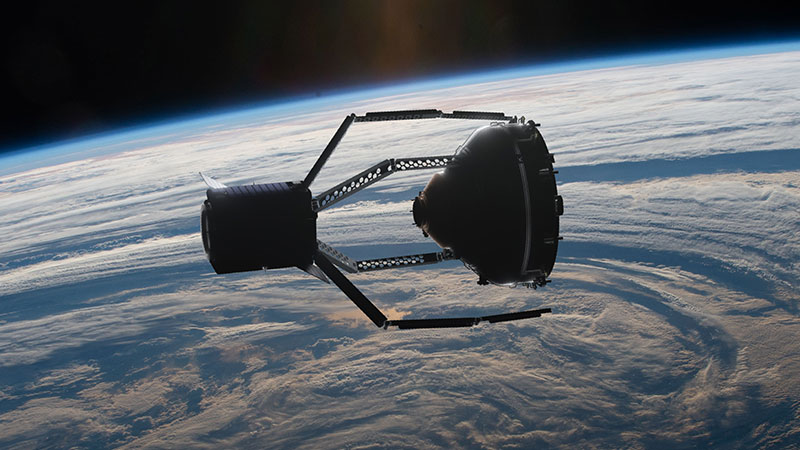ClearSpace-1 mission – European Space Agency in collaboration with Switzerland-based startup ClearSpace has decided to launch a spacecraft to remove space debris from Earth’s Orbit. Dubbed as the world’s first space debris removal mission the ClearSpace-1 mission will involve a robot-like spacecraft with four arms. The mission will target VESPA (VEga Secondary Payload Adapter) left by Arianespace’s second Vega mission in 2013. The mission intends to move the VESPA closer to the Earth’s atmosphere where it will burn up. In this article, we will discuss – composition of space debris falling to earth and probable solutions for the same.
Suggested Reading: “Mayflower 400” – World’s First Artificial Intelligence Powered Unmanned Ship
What is ClearSpace-1 Mission?
In light of the growing concerns of space junk, the European Space Agency, for the first time, in 2019 asked for suggestions to remove space debris. From a panel of more than 12 candidates, ClearSpace was picked to fight the menace of space debris. The objective of the ClearSpace-1 space mission is to actively make Earth’s orbit free from space debris as well as to demonstrate the new methodologies for upcoming commercial debris removal missions.
The 500-kilogram ClearSpace-1 chaser spacecraft is slated to be launched aboard a Vega-C rocket in 2025.
source
European Space Agency has signed an agreement of $105 Million with ClearSpace for space debris removal.
Purpose of ClearSpace-1 Mission
Under ESA’s Clean Space Initiative, ClearSpace spacecraft will capture the upper part of a VESPA which was used in the Vega launch vehicle in 2013. VESPA was left in ‘gradual disposal’ orbit also called junk orbit or graveyard orbit. The task assigned to the chaser spacecraft is to retrieve VESPA from its natural orbit and move it closer to the Earth’s atmosphere where it will burn up and vanish. To capture the target the robotic spacecraft features four articulating tentacles. The path of the spacecraft will be guided from the signals received from the onboard cameras, RADAR and LIDAR. For engineering assistance, ClearSpace will be assisted by Deimos Space, APCO-Technologies, OHB-Sweden, Airbus, and Satellite Applications Catapult.
Also Read: Tissue chips in Space: The Living Integrated Circuit
What Makes Space Debris?
Also known as space junk in simple terms, space debris are human-made objects such as satellites and rockets which are now defunct. The principal focus, while dealing with space debris, is on objects that are in the Earth’s orbit. Space debris also includes the eroded and disintegrated parts of human-made space objects that might take place during the mission launch or spacewalks. All these small parts accumulate with time and form a big object orbiting around Earth, that is of no practical use. The space debris might collide with the active satellites and can also make them defunct. That is why we need proper resolution in this regard and ClearSpace-1 is a crucial step in mitigating space debris problems.
You may Also Like To Read: Stratospheric Aerosol Injection – Controversial Technique To Mitigate Climate Change
Space Debris Removal & Management
With the launch of more and more satellites space has become congested. The launch of satellite clusters by space agencies makes them feel proud but on the other hand, the absence of effective space traffic management rings the alarm bell. For a safe and sustainable space, it is crucial to look at the other side of the coin and think about ways to eliminate the chances of satellite collisions. Policies to regulate and manage the space traffic are the needs of the hour.
ESA’s lead in capturing and disposal of uncooperative space objects is an appreciable step. Space offers us a pool of endless opportunities but the utilization of the space resource in a prudent manner is what will make us the most intelligent species in the world.
